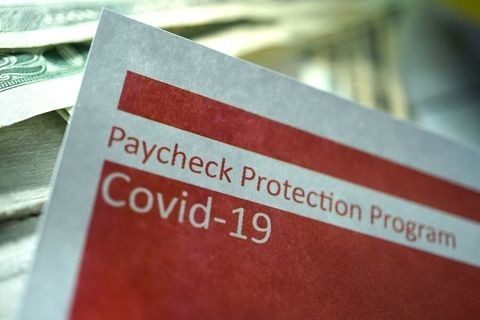Health Care: Plaintiffs’ Bar Is Taking a Page From the Retirement Plan Playbook
Publication | 01.15.25
A nascent trend is forming in the world of health care class actions. Plaintiffs’ attorneys are taking the excessive-fee concept pioneered in retirement plan litigation and applying it to self-funded corporate health insurance plans.
Andrew Holmer, a partner in Crowell & Moring’s Litigation Group, says, “The plaintiffs’ bar is testing the fences of excessive-fee class actions against health plans. We are likely at an inflection point where a few early wins for health plans could potentially fend off a wave of health plan excessive-fee class actions.”
Where It All Started
To get a better sense of what Holmer is suggesting, it’s instructive to take a quick look at the history of excessive-fee class actions targeting retirement plans.
These cases began to emerge in the early 2000s, alleging that corporate 401(k) retirement plans were paying administrative and investment management fees that were too high—and that the plans’ sponsors were therefore negligent in their fiduciary duties. As set forth in the Employee Retirement Income Security Act of 1974 (ERISA), such duties require plan fiduciaries to manage plan assets solely for the benefit of plan participants and their beneficiaries.
Plaintiffs’ attorneys initially brought excessive-fee class actions against very large 401(k) plans, reasoning that they offered the deepest pockets for damages or settlements. As their strategy proved successful, they broadened their focus to include smaller 401(k) plans and certain 403(b) plans sponsored by nonprofit organizations.
The frequency and dollar size of excessive-fee class actions against retirement plans have reached unprecedented levels in the past few years (see chart). Holmer states that the plaintiffs’ bar has filed similar suits against employer-sponsored health plans (also governed by ERISA). Decisions in these early cases will tell us whether the theories in the health care context have merit.
Knudsen: Standing Issue Is Roadblock
In recent years, the plaintiffs’ bar has begun to test excessive-fee theories developed in 401(k) litigation against health plans and related entities. Defendants include health plans and plan administrators and increasingly focus on their relationships with pharmacy benefit managers (PBMs), which are intermediaries that negotiate with drug manufacturers on behalf of plans to secure discounted prices.
One recent case, Knudsen et al. v. MetLife Group, was filed in January 2023. Plaintiffs claimed that MetLife used $65 million that its PBM had obtained in rebated discounts for itself—rather than putting that money into the self-funded health plan, which the plaintiffs argued would benefit participants.
In September 2024, a 3rd Circuit panel affirmed dismissal of the lawsuit on the grounds that plaintiffs didn’t suffer actual or imminent financial harm under Article III of the Constitution, meaning that they lacked standing to bring the case. Although the plaintiffs hypothesized that putting drug rebates back into the health plan might have lowered their individual out-of-pocket costs, the 3rd Circuit held that was too speculative to support Article III standing. The 3rd Circuit did not completely rule out the “theoretical possibility” of standing in such cases, but it emphasized that plaintiffs needed to establish a direct impact on their own premiums or other out-of-pocket costs in concrete terms, such as in what years or by how much.
As plaintiffs continue to test the waters of 401(k)-style class actions against health plans, “standing will be an early roadblock for plaintiffs,” says Holmer. “We expect standing will prove critical to keeping the floodgates of litigation closed.”
Lewandowski: Focus On Plan Drug Costs
Another test case, Lewandowski v. Johnson & Johnson et al., was filed in February 2024. The named plaintiff, a Johnson & Johnson employee, claimed that the plan’s fiduciaries breached their duty under ERISA by failing to demand lower drug prices from the PBM and, as a result, caused participants to pay higher premiums and to overpay for covered drugs. The case is the first of its kind to address the underlying costs associated with an employer’s self-insured prescription drug benefit.

The plaintiffs’ bar is testing the fences of excessive-fee class actions against health plans. We are likely at an inflection point where a few early wins for health plans could potentially fend off a wave of health plan excessive-fee class actions.
— Andrew Holmer
In June 2024, the defendants filed a motion to dismiss based on their assertion that the plaintiff lacked standing. Both sides made additional filings following the Knudsen decision. The plaintiff claimed that her standing argument would satisfy the 3rd Circuit’s signaled criteria for standing, while the defendants countered that she lacked standing because she hadn’t sufficiently proven harm of any kind. Even increased drug prices could not have raised the plaintiff’s out-of-pocket costs, defendants argued, because the plaintiff’s health plan included an out-of-pocket maximum—capping the amount she would pay out of pocket—which she would have hit even without the allegedly higher drug prices. As of late 2024, Lewandowski was pending a decision on the dismissal motion.
Holmer sees Knudsen and Lewandowski, as well as a recent copycat case filed against a different self-funded health plan in the District of Minnesota, as test cases that will have an outsized impact on whether the excessive-fee claim can migrate from retirement plans to health plans.
Action Steps
There are steps that current and potential defendants can take to protect themselves, says Holmer.
The first is to focus early and aggressively on the plaintiffs’ standing under Article III for cases that have been filed. “The 3rd Circuit set a high bar for standing in Knudsen in terms of showing precisely how, and how much, a fiduciary’s decisions raised their individual premiums or out-of-pocket costs,” Holmer says. “That is a very difficult standard for plaintiffs to meet, and defendants should hold plaintiffs to it.”
Holmer also recommends measures defendants can take proactively before a lawsuit ever gets filed. “As with everything else in ERISA, plan language is important,” Holmer explains. He notes that “in Knudsen, the health plan’s governing documents were explicit that drug rebates would not be considered in determining co-insurance or co-payment amounts. So it’s difficult to see how the plaintiffs in that case could have possibly shown an impact on their own out-of-pocket costs.”
Holmer notes that plan designs relying on fixed co-payments for prescriptions can also have a prophylactic effect on cases like Lewandowski, in which plaintiffs focus on the individual costs of a selective group of cherry-picked drugs. “If the individual’s co-pay doesn’t change depending on the price of the drug, it’s hard to see how a plaintiff could establish any financial injury,” he says.
In addition, just like traditional 401(k) excessive-fee cases, health plans and fiduciaries can further mitigate their liability by establishing and documenting a prudent process that is used to choose the plan’s PBM or administrator and takes into account things like administrative fees, cost savings, and qualitative benefits to plan members.
Finally, Holmer recommends that potential defendants review their fiduciary liability insurance coverage. Policies should cover items related to PBMs and administrators, excessive fees, and fiduciary issues more broadly.
To read more from Litigation Forecast 2025: What Corporate Counsel Need to Know for the Coming Year, visit here.
Contacts
Insights
Publication | 03.31.25
Health System Settles FCA Case Over PPP Loan 03.31.25 Report on Medicare Compliance
Publication | 03.24.25


